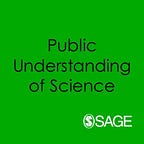Learning Through Citizen Science: Enhancing Opportunities by Design
Review by Susanne Hecker
This report is a must-read for all those who are interested in supporting learning through citizen science, researching learning outcomes in citizen science and for funders who aim at targeting and evaluating learning outcomes in citizen science.
Citizen science projects flourish all over the world. Millions of participants engage in various ways with different motivations. They apply scientific methods, collect and analyse scientific data, disseminate results and apply scientific approaches to address issues of concern to them in co-created projects. This encounter between scientists and participants who are not necessarily trained scientists but come with varying degrees of formal education creates opportunities for learning. Yet, the potential for these learning opportunities is not fully tapped.
The National Academies of Sciences, Engineering and Medicine (NASEM) asked an expert committee from diverse backgrounds to report on how citizen science projects can be better designed to allow for science learning. The resulting consensus study report argues that citizen science is uniquely positioned to enhance participants learning in science.
The introductory section of the report carefully develops the committee’s interpretation of their task, their understanding of science learning and citizen science and the steps they took to meet the aims. They provide some framing considerations on e.g. evidence for learning and issues of ethics that they lay out further in the following sections. They want to reach various stakeholders with the report, including researchers, citizen science practitioners, science learning researchers, educators, funders and policy makers.
In Chapter two the report elaborates on citizen science, introducing definitions and typologies, project similarities as prerequisites for being called a citizen science project and their variations, roles of participants, and finishing with considerations about demographics of citizen science participation. The authors call for careful consideration of diversity, equity and inclusion in citizen science projects to avoid underrepresentation.
The following four chapters consider various aspects of learning through citizen science. Chapter three talks about the unique opportunities for learning through citizen science, goals of science learning in general and reflections on who is learning in citizen science. Chapter four aims to lay out the principles of learning and specifically to address readers new to the field. Chapter five provides potential learning outcomes of citizen science and underlines that learning outcomes are intertwined and how one outcome can reinforce another outcome. Chapter six presents nine strategies that enhance learning for all participants.
The organization of the report offers a slow progression of the argument which makes the book a valuable resource for those who want to become familiar with the concept of citizen science and its potential for science learning. Each section is followed by referencing which invites further in-depth reading and shows the foundations of the argument in the literature.
This report is a must-read for all those who are interested in supporting learning through citizen science, researching learning outcomes in citizen science and for funders who aim at targeting and evaluating learning outcomes in citizen science. But two issues can be raised.
The authors do provide an introduction to their understanding and the field of citizen science but I was hoping for a more detailed yet succinct introduction into the field of science learning. It is only much later in the report that they provide detailed insights into their understanding of the concept. They state that they take a broad conception of science learning and then go directly over to discussing learning outcomes. Also, the concept of science learning as distinct from learning in general is not clearly developed.
The report includes many insightful, detailed sub-chapters, boxes, and summaries and it could benefit from a more standardized organization and design. For example, instead of providing sub-summaries to sub-chapters followed by an overall chapter summary, one summary would be sufficient followed by key recommendations where applicable. This would not diminish the value of the content; on the contrary, it would highlight it and make it more accessible for the various audiences the authors wanted to address.
The in-depth analysis of learning in and through citizen science with the focus on participants makes another research gap even more obvious. It is high time we think about scientists’ learning in citizen science. Self-reflection never is an easy task. Yet, this approach would echo editor Rajul Pandya’s words in the preface, “the most effective citizen science projects create a space where all people are considered intellectual partners and contributors”. We scientists need to be aware of our own role and our own need for learning.
Susanne Hecker is a researcher at the Helmholtz Centre for Environmental Research — UFZ | German Centre for Integrative Biodiversity Research (iDiv) Halle-Jena-Leipzig in Germany. She is first editor of Citizen Science: Innovation in Open Science, Society and Policy, UCL Press (2018), edited by Hecker S., Haklay M., Bowser A., Makuch, Z., Vogel, J. & Bonn, A.
